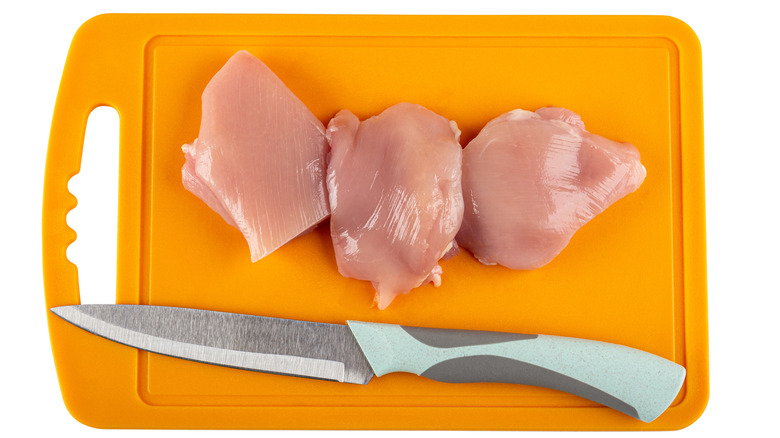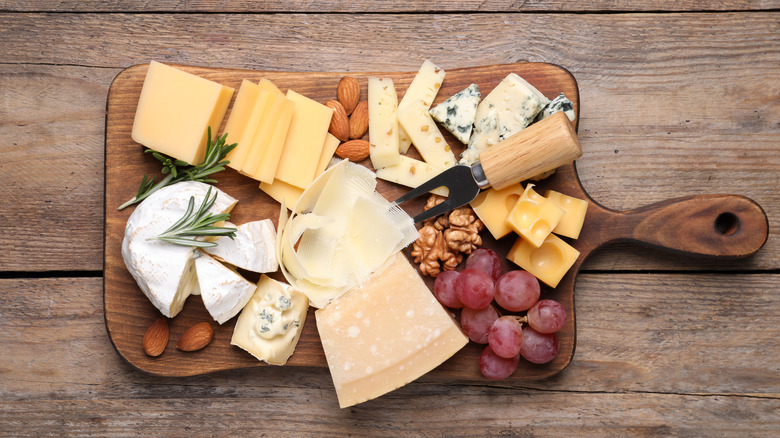Here's Why You Should Have A Separate Cutting Board For Raw Chicken
When it comes to dealing with raw chicken, there are a few important things to keep in mind. First, you have to make sure it's not expired by the time you're ready to cook it, especially if you didn't buy the bird that morning. Then you have to decide if you'll be brining it or just cooking it. And when it's time to cook it, you'll have to decide how to cook it and what seasoning to use. You also have to make sure it reaches an internal temperature of 165 degrees Fahrenheit. But there's one other important thing to consider with raw chicken, and it involves your cutting board.
Chicken, of course, isn't the only food that makes contact with a cutting board. Vegetables, fruit, bread, and cheese are a few of the other foods that can be sliced, diced, and cubed. Chances are that you use the same board to cut all your food, including raw chicken. While you may think this is perfectly fine to do so because you wash the board after each use, the right way to use a cutting board is to keep a separate one for raw chicken. Here's why:
Using one board for raw chicken and other food increases cross-contamination risks
It's widely known that chicken is among the many foods you should never eat raw because it can carry bacteria, which might lead to food poisoning. In fact, the Centers for Disease Control and Prevention claims that "raw foods of animal origin are the most likely to be contaminated, specifically raw or undercooked meat and poultry ..."
So if you were to use the same cutting board for raw chicken and later for strawberries without properly cleaning the board, the risk of cross-contamination increases, North Carolina (NC) State University explains. This is why it's best to eliminate the worry and just use one board for raw meat and another for other foods.
Benjamin Chapman, the director of the Safe Plates food safety extension and research program at North Carolina State University, provided some tips for cutting board selection and cleaning. Plastic cutting boards are best for meat because they can be decontaminated with soap and hot water in the dishwasher. Wooden cutting boards typically have to be washed by hand, so they should be used only for produce, cheese, and other foods that don't require cooking.
Regardless of what you're cutting, all cutting boards should be washed, sanitized, and dried thoroughly after each use, since moisture can lead to bacterial growth. If you're washing the board by hand, scrub it with hot soap and water. Once dry, you can sanitize it. Chapman recommends using a chlorine-based sanitizer for plastic boards and a quaternary ammonium sanitizer for wood.

